Stadtman Investigators Pursuing Their Passion for Science
Trans-NIH Recruitment Attracts a Diversity of Researchers
BY LAURA STEPHENSON CARTER
“Being a scientist at NIH is one of the greatest jobs you can dream of,” said Eric Calvo, a Stadtman Investigator in the National Institute of Allergy and Infectious Diseases, and one of 18 investigators in the 2017-2018 class of Stadtman recruits.
That sentiment is shared by the more than 100 Stadtman Investigators who have been recruited since 2009 when the Earl Stadtman Tenure Track Investigators program, named for the legendary biochemist who worked at NIH for 50 years, began. Since then about 25% of them have become tenured investigators.
“The program identifies the best institute that fits my research goals, not the other way around,” said fellow Stadtman Payel Sen, in the National Institute on Aging.
Traditionally, institutes and centers (ICs) conducted their own individual, programmatic searches to recruit new investigators. But the Stadtman program, which began in 2009, complements this process by conducting broad searches that cross all areas of biomedical research. It’s designed to attract a diverse group of talented early-career scientists who might not apply to a more narrowly defined position description at the NIH. Applicants are asked to describe their research, and, for those qualifying, NIH tries to create a tenure-track position in one of the ICs to match that talent. Once the Stadtmans are selected, they are offered competitive salaries, research space, resources, supported positions, and an operating budget.
“The Intramural Research Program has unparalleled resources and outstanding scientists,” said Class of 2017-2018 Stadtman Investigator Alexandra White, who came to the National Institute of Environmental Health Sciences as a postdoc in 2015. “It provides the ideal opportunity to conduct cutting-edge science.”
The 18 Stadtman investigators featured in this article have research interests ranging from cancer, kidney disease, and vector-borne diseases (including malaria) to minority health, aging, and gene regulation. Several of them have also been named NIH Distinguished Scholars (DSP), a program launched in 2018 to facilitate the hiring and career progression of tenure-track investigators who have demonstrated a commitment to promoting diversity and inclusion in the biomedical-research workforce. For more on the DSP, go to https://diversity.nih.gov/programs-partnerships/dsp.
“I applied to the Earl Stadtman program because it provides a way for young investigators to develop research programs that cannot be developed elsewhere,” said Jennifer Jones, a Stadtman Investigator in the National Cancer Institute.
Read on to learn more about this group of Stadtman investigators. For more on the Stadtman program, how to apply, and links to stories about other Stadtmans, go to https://irp.nih.gov/careers/trans-nih-scientific-recruitments/stadtman-tenure-track-investigators.
EROS LAZZERINI DENCHI, NCI-CCR
BEHDAD (BEN) AFZALI, M.D., PH.D., NIDDK
Chief, Immunoregulation Section, Kidney Diseases Branch, National Institute of Diabetes and Digestive and Kidney Diseases
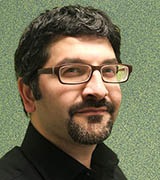
Website: https://irp.nih.gov/pi/behdad-ben-afzali
Joined NIH: In 2014 as a clinical research fellow in NIAMS; in 2018, became a Stadtman Investigator in NIDDK.
Research focus: Kidney diseases are often the result of autoimmune or inflammatory insults to the kidneys. My team is investigating how immunoregulation is perturbed in these diseases and why the resolution of inflammation can be followed either by tissue healing or irreversible scarring that can lead to loss of kidney function over time. We are looking at how transcriptional signals are integrated into immune cells to determine inflammatory versus regulatory immune responses; and how mediators produced by immune cells determine whether inflammation results in tissue healing or scarring. We hope to develop strategies that manipulate the balance between inflammatory and regulatory immune responses in order to minimize or prevent kidney scarring.
Why did you choose to apply for the Earl Stadtman Tenure-Track Investigators Program: The Stadtman program is particularly attractive because it encourages high-risk, high-reward, imaginative research programs that cross traditional scientific disciplines. I found the resource support and the time provided to pursue key questions in my field, together with the extraordinarily rich and diverse scientific environment of the NIH, especially appealing aspects of the program.
ERIC CALVO, PH.D., NIAID
Chief, Molecular Entomology Unit, National Institute of Allergy and Infectious Diseases
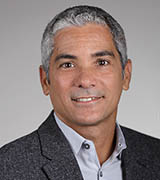
Website: https://www.niaid.nih.gov/research/eric-calvo-phd
Came to NIH: In 2004 as a postdoctoral fellow in NIAID; became a Stadtman Investigator and NIH Distinguished Scholar in 2018.
Research focus: Vector-borne diseases (Dengue fever, West Nile virus, Lyme disease, malaria, and others) are infections transmitted by blood-feeding arthropods such as mosquitoes, ticks, and fleas. My group is deciphering the mechanisms of the vector-host and vector-pathogen interactions at the biochemical and molecular level; extending the functional characterization of salivary proteins from blood-feeding arthropods and their role in pathogen transmission; and furthering the understanding of disease transmission and the host’s response to vector-borne diseases. We aim to develop new transmission-blocking strategies for such diseases.
Why did you choose to apply for the Earl Stadtman Tenure-Track Investigators Program: Being a scientist at NIH is one of the greatest jobs you can dream of (nerds in heaven?). The Earl Stadtman program gives you the opportunity and freedom to pursue your own scientific questions to understand the mysteries of nature.
CHONGYI CHEN, PH.D., NCI-CCR
Laboratory of Biochemistry and Molecular Biology, Center for Cancer Research, National Cancer Institute

Website: https://irp.nih.gov/pi/chongyi-chen
Joined NIH: In 2018 as Stadtman Investigator.
Research focus: Technological advances have made it possible to study how genomic and chromosomal changes occur in human cells. My lab is combining single-cell assays and genomic technologies to examine chromatin structure and gene expression in human cells, with a focus on the roles of DNA topology. We are also developing new assays and techniques in single-cell genomics, epigenomics, and transcriptomics. Our long-term goal is to apply the new knowledge in chromosome biology and the new methodologies in single-cell -omics to cancer biology and medicine.
Why did you choose to apply for the Earl Stadtman Tenure-Track Investigators Program: I was attracted to the NIH and the Stadtman Program by its stable funding and ample resources to support my research, so that I can focus on my scientific interest without many distractions.
SHERINE EL-TOUKHY, PH.D., NIMHD
Digital Health and Health Disparities Research Unit, Population and Community Sciences, National Institute on Minority Health and Health Disparities

Website: https://irp.nih.gov/pi/sherine-el-toukhy
Joined NIH: In 2014 as a postdoctoral fellow in NHLBI and NIMHD; became a Stadtman Investigator and NIH Distinguished Scholar in 2018.
Research focus: My research group leverages digital technologies to improve minority health and reduce health disparities. Specifically, my group designs, implements, and evaluates individual-level just-in-time adaptive behavioral interventions such as smoking-cessation interventions using mobile phones (mHealth); examines disparities in system-level adoption, integration, and impact of digital technologies within hospitals such as electronic health records; and identifies connection points between individual- and system-level digital technologies to maximize the reach of behavioral interventions and improve clinical decision-making.
Why did you choose to apply for the Earl Stadtman Tenure-Track Investigators Program: The Stadtman program shines a spotlight on a pool of diverse investigators pursuing pioneering research questions who might not be recruited under a traditional search. The NIH tenure-track Stadtman investigator position is a perfect avenue for investigators who are dedicated to the pursuit of lifelong passion for research that betters people’s health and lives.
JENNIFER JONES, M.D., PH.D., NCI-CCR
Head, Translational Nanobiology Section, Laboratory of Pathology, Center for Cancer Research, National Cancer Institute

Website: https://irp.nih.gov/pi/jennifer-jones and https://nano.ccr.cancer.gov
Came to NIH: In 2012 as an assistant clinical investigator in NCI’s Vaccine Branch; became a Stadtman Investigator and NIH Distinguished Scholar in NCI’s Laboratory of Pathology in 2018.
Research Focus: My primary research objective is to decode the biological lexicon of circulating extracellular vesicles (EVPs) and particles, with a central hypothesis is that this decoded lexicon has the potential to provide critical knowledge regarding the status of patients’ tumors, the status of patients/ responses to treatment, and the complex landscape of their other biological systems. In other words, we are developing new ways to “read” the functional status of each patient’s many various interconnected systems, and we are seeking to use that information to improve patient care and quality of life.
Why did you choose to apply for the Earl Stadtman Tenure-Track Investigators Program: I applied to the Earl Stadtman program because it provides a way for young investigators to develop research programs that cannot be developed elsewhere. The NIH Clinical Center is the only hospital in the world that is entirely dedicated to translational research to advance patient care, and it is uniquely nested within a research community that has expertise across countless disciplines. Those qualities alone would have been sufficient motivation to apply for the NIH Stadtman program, but what has been even more valuable than those qualities is the wisdom and support of my mentors and colleagues within the NIH community who have generously provided input and recommendations for how to make our work more robust and more impactful.
LAURA KEROSUO-PAHLBERG, PH.D., NIDCR
Neural Crest Development and Disease Unit, National Institute of Dental and Craniofacial Research
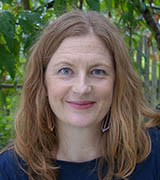
Website: https://irp.nih.gov/pi/laura-kerosuo
Came to NIH: In 2018 as a Stadtman Investigator.
Research Focus: I am studying the neural crest, the stem cells that give rise to various cell types ranging from melanocytes and peripheral ganglia to cells contributing to the formation of the craniofacial skeleton and endocrine tissues. About 10% of birth defects are derived from the neural crest including cleft palate and other craniofacial malformations as well as cancers such as melanoma and neuroblastoma. My group aims to understand the molecular mechanisms of neural-crest stemness, provide a comprehensive picture of early neural-crest development, and obtain a better understanding of how neural-crest-derived diseases arise.
Why did you choose to apply for the Earl Stadtman Tenure-Track Investigators Program: The Earl Stadtman Program caught my attention due to its reputation for rigorous science and the generous infrastructure the NIH provides to its investigators. I saw the program as an opportunity to dive in and use all possible creativity my team can come up with to achieve exciting discoveries. With no teaching obligation and a generous budget, the program truly felt like an amazing chance to grasp even the riskiest of projects, which one would hesitate to invest in as an assistant professor outside the NIH.
EROS LAZZERINI DENCHI, PH.D., NCI-CCR
Laboratory of Genome Integrity, Center for Cancer Research, National Cancer Institute
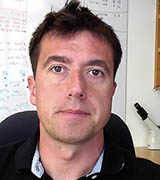
Website: https://irp.nih.gov/pi/eros-lazzerini-denchi
Came to NIH: In 2018 as a Stadtman Investigator; became tenured as a senior investigator in March 2021.
Research Focus: Chromosome endcaps, called telomeres, shorten as one ages. I am interested in the mechanisms by which telomeres protect chromosome ends, thus ensuring chromosome and genome stability. My lab is identifying telomere-associated proteins to define their role in preventing the activation of the DNA damage-response pathway and suppression of end-to-end chromosomal fusions. We are also probing the role of telomere shortening in aging and tumor onset, using mouse models that recapitulate telomere dysfunction in stem cells and other cellular compartments.
Why did you choose to apply for the Earl Stadtman Tenure-Track Investigators Program: The chromosome biology community at NIH is excellent, supportive, and scientifically diverse. Also, I enjoy access to advanced technologies and colleagues from a wide range of disciplines. I can focus 100% on the science without the pressures of teaching commitments and securing external funding.
ANDRES LEBENSOHN, PH.D., NCI-CCR
Laboratory of Cellular and Molecular Biology, Center for Cancer Research, National Cancer Institute
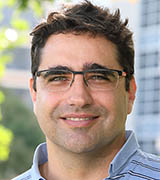
Website: https://irp.nih.gov/pi/andres-lebensohn
Came to NIH: In 2018 as a Stadtman Investigator.
Research focus: My lab studies how cell signaling pathways are used, reused, and repurposed to drive the many cellular processes that give rise to tissues and organs during embryonic development, and maintain them in adult life. Through powerful genetic screens we discovered several new regulatory mechanisms in WNT signaling, a fundamental pathway that orchestrates patterning and morphogenesis during development, and promotes tissue renewal and regeneration in adults. Dysregulation of WNT signaling can lead to many diseases, most notably cancer. Based on our mechanistic insights, we aim to design more-effective and -selective therapies to target WNT-driven tumors.
Why did you choose to apply for the Earl Stadtman Tenure-Track Investigators Program: I was looking for a position where I could dedicate myself entirely to doing cutting-edge research in a stimulating and collegial environment. I also wanted full intellectual freedom and access to all the necessary resources to pursue bold research ideas. The Stadtman Investigator Program checked all the boxes.
MARCOS MORGAN, PH.D., NIEHS
Head, Male Reproduction and RNA Biology Group, National Institute of Environmental Health Sciences

Website: https://irp.nih.gov/pi/marcos-morgan
Came to NIH: In 2019 as a Stadtman Investigator.
Research focus: Dysregulation of cellular RNA amounts leads to growth defects and cancer. My team’s goal is to understand the role of RNA metabolism during development. To this end, we investigate animal models with deficiencies in RNA modification pathways. We hope to bridge the gap between the mechanistic knowledge of gene regulation at the cellular level and the principles that define multicellular organization.
Why did you choose to apply for the Earl Stadtman Tenure-Track Investigators Program: The generous support allows me to focus on my science.
MEERA MURGAI, PH.D., NCI-CCR
Laboratory of Cancer Biology and Genetics, Center for Cancer Research, National Cancer Institute

Website: https://irp.nih.gov/pi/meera-murgai
Came to NIH: In 2013 as a postdoctoral fellow; became a Stadtman Investigator and an NIH Distinguished Scholar in 2019.
Research focus: Metastasis causes most cancer deaths, and new therapies that are based on a deeper understanding of this process are required to improve patient survival. My research centers on perivascular cell plasticity and heterogeneity in the metastatic microenvironment. Most recently, my group has been using single-cell sequencing, immunofluorescent imaging, and computational methods to elucidate the stromal-cell populations that play pro- and anti-tumor roles in premetastatic and metastatic microenvironments. We hope our findings will provide insight into future therapeutic interventions to limit metastasis.
Why did you choose to apply for the Earl Stadtman Tenure-Track Investigators Program: NIH offers a strong and diverse community of highly engaged scientists, provides access to leading technologies, and grants the ability to tackle really exciting high-risk long-term questions. The highly collaborative environment here will really enhance and accelerate our research.
PEDRO PEREIRA DA ROCHA, PH.D., NICHD
Unit on Genome Structure and Regulation, National Institute of Child Health and Human Development

Website: https://irp.nih.gov/pi/pedro-rocha
Came to NIH: In 2018 as a Stadtman Investigator.
Research focus: DNA organization influences cell behavior and ultimately animal development and health. My group is investigating the mechanisms through which DNA folding itself is established and regulated and which proteins are involved in these processes. We are exploring cell-lineage differentiation, gene regulation, and how noncoding DNA elements and the 3D architecture of chromosomes contribute to these processes during development and disease. We are also fascinated with early mammalian development as a system to decipher how cells make lineage decisions and how gene-regulatory networks are established.
Why did you choose to apply for the Earl Stadtman Tenure-Track Investigators Program: The emphasis on innovative and high-risk science together with a strong mentorship program makes the NIH an exceptional institution to start an independent research program.
MERU SADHU, PH.D., NHGRI
Head, Systems Biology and Genome Engineering Section, Genetic Disease Research Branch, National Human Genome Research Institute
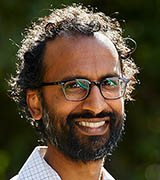
Website: https://www.genome.gov/staff/Meru-J-Sadhu-PhD
Came to NIH: In 2018 as Stadtman Investigator and became an NIH Distinguished Scholar in 2019.
Research focus: I am striving to systematically identify the phenotypic consequences of genetic differences. My group is studying the functional effects of genetic diversity, such as natural variation between individuals or between species, or novel genetic changes that we create. We apply genome-engineering methods and use CRISPR gene-editing technologies, large-scale oligonucleotide synthesis, yeast models, and high-throughput phenotyping and genotyping to generate and study the effects of thousands of unique genetic variants. We also aim to further expand the reach of genomics by developing new and powerful approaches to study genetic diversity.
Why did you choose to apply for the Earl Stadtman Tenure-Track Investigators Program: I was very excited that researchers in the NIH’s intramural program can focus so completely on their science. That, combined with the extraordinary breadth of research here, made the NIH my ideal destination.
PAYEL SEN, PH.D., NIA
Head, Functional Epigenomics Unit, Laboratory of Genetics and Genomics, National Institute on Aging

Website: https://irp.nih.gov/pi/payel-sen
Came to NIH: In 2019 as a Stadtman Investigator.
Research focus: What drives aging? My lab is trying to figure that out. We are investigating chromatin changes that occur during senescence, aging, and age-related diseases. To delineate the mechanisms that regulate aging, we rely on experimental, computational, and high-throughput technologies to discover novel epigenetic targets of aging. With the help of a naturally aged mouse model, we hope to identify key enzymes and transcription factors. Our long-term goal is to modulate these factors using epigenetic drugs, CRISPR/Cas9 gene editing, and other cellular reprogramming strategies to improve health and, ultimately, extend life.
Why did you choose to apply for the Earl Stadtman Tenure-Track Investigators Program: There are two primary reasons I chose to apply to the Stadtman Program: 1) The program identifies the best institute that fits my research goals, not the other way around; and 2) The program gives junior scientists the freedom to devote time at the bench and mentor the next generation of scientists through hands-on training.
HUGO TEJEDA, PH.D., NIMH
Chief, Unit on Neuromodulation and Synaptic Integration, National Institute of Mental Health
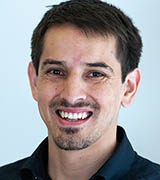
Website: https://irp.nih.gov/pi/hugo-tejeda
Came to NIH: In 2008 to complete graduate and postdoctoral fellowships at NIDA; in 2018, joined NIMH as a Stadtman Investigator and NIH Distinguished Scholar.
Research focus: The brain’s neuromodulatory systems, such as the endogenous opioid system, play a role in modifying synaptic integration, a process by which neurons process incoming signals and convert them to output signals. (Endogenous opioids, such as endorphins and dynorphins, are produced by the body and act on opioid receptors throughout the central nervous system to relieve pain and regulate anxiety and mood.) My group focuses on the role of neuromodulation within motivational and emotional neural circuits in processing information and orchestrating behavior. We are also identifying changes in neuromodulators (such as opioid receptors) and synaptic integration in limbic circuits of animal models of psychiatric disorder symptom clusters to identify novel therapeutic targets and increase our understanding of conventional therapies.
Why did you choose to apply for the Earl Stadtman Tenure-Track Investigators Program: The NIH provides a stimulating, supportive environment in which one can focus on their basic science. Simultaneously, the research-focused clinical environment facilitates reverse and forward translational research influenced by basic science.
JOEL VEGA-RODRIGUEZ, PH.D., NIAID
Chief, Molecular Parasitology and Entomology Unit, National Institute of Allergy and Infectious Diseases
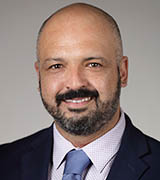
Website: https://www.niaid.nih.gov/research/joel-vega-rodriguez-phd
Came to NIH: In 2018 as a Stadtman Investigator and NIH Distinguished Scholar.
Research focus: My team is studying the biology of malaria parasites (protozoa of the genus Plasmodium) during two vulnerable times in their lifecycle: when they are sexually reproducing in the mosquito midgut; and when the mosquito injects the parasitic sporozoites into the human host. We are investigating the role of vector and host factors for parasite infectivity and the molecular mechanisms required for Plasmodium sexual reproduction in the mosquito. Our long-term goal is to identify new targets that could be exploited for malaria interventions including chemotherapy, vaccine development, and transgenic mosquitoes.
Why did you choose to apply for the Earl Stadtman Tenure-Track Investigators Program: The Stadtman gave me the opportunity to establish a unique research program to study the transmission of malaria by mosquitoes as part of a diverse and vibrant scientific community at the NIH. Furthermore, the exceptional resources available at the NIH foster the advancement of my scientific and professional career as well as those of my trainees.
EMILY VOGTMANN, PH.D., M.P.H., NCI-DCEG
Metabolic Epidemiology Branch, Division of Cancer Epidemiology and Genetics, National Cancer Institute

Website: https://irp.nih.gov/pi/emily-vogtmann
Came to NIH: In 2013 as a Cancer Prevention Fellow; promoted to research fellow in 2016; became Stadtman Investigator in 2018 and an NIH Distinguished Scholar in 2019.
Research focus: I am investigating the association between the human microbiota and cancer risk and how the microbiota may mediate associations between exposures and cancer risk. For example, my team is looking at the effects of cancer risk factors, such as tobacco use, betel quid use (chewing betel nuts), alcohol intake, and diet, on microbial communities. We are also studying risk factors—and evaluating the impact of lifestyle factors—for head-and-neck and lower gastrointestinal cancers. We are also starting to characterize the fungal component of the microbiota so its relationship to cancer risk can be considered.
Why did you choose to apply for the Earl Stadtman Tenure-Track Investigators Program: As a postdoctoral fellow, I was closely involved in the development of the microbiome research program in DCEG, where we evaluated sample-collection methods, laboratory handling, bioinformatics, and statistical analysis methods. I applied for the Earl Stadtman Tenure-Track Investigators program to continue this research and to start an independent research program using optimized methods to study the impact of the human microbiome on cancer risk.
ALEXANDRA WHITE, PH.D., M.S.P.H., NIEHS
Environment and Cancer Epidemiology Group, National Institute of Environmental Health Sciences

Website: https://irp.nih.gov/pi/alexandra-white
Came to NIH: In 2015 as a postdoctoral fellow; became a Stadtman Investigator in 2019.
Research focus: My research focuses on the role of air pollution and environmental chemicals, individually and in combination in breast-cancer risk. My research aims to identify novel and modifiable environmental exposures related to cancer risk and explore underlying biologic mechanisms. Currently my group is investigating the role of air-pollution components and other environmental chemical mixtures in relation to epigenetics, breast-tissue characteristics, and cancer incidence. This work will identify environmental carcinogens for which exposure can be mitigated either with policy changes or individual-level interventions.
Why did you choose to apply for the Earl Stadtman Tenure-Track Investigators Program: The Intramural Research Program has unparalleled resources and outstanding scientists. It provides the ideal opportunity to conduct cutting-edge science.
FAUSTINE WILLIAMS, PH.D., NIMHD
Health Disparities and Geospatial Transdisciplinary Research Lab, National Institute on Minority Health and Health Disparities

Website: https://irp.nih.gov/pi/faustine-williams
Came to NIH: In 2018 as a Stadtman Investigator and NIH Distinguished Scholar.
Research focus: Acculturation and social determinants influencing immigrant, migrant, and minority populations’ health are particularly challenging. These factors, including sociocultural, environmental, economic, and biological factors and genetics are often interconnected, making them difficult to address. Our research program seeks to understand these complex dynamic factors. Subsequently, the lab has two interrelated research goals. The first is using transdisciplinary methods including system science, geographic information system, and mixture models to understand the complex interactions of factors contributing to the health and health disparities of immigrant, migrant, and minority populations. The second is using our findings to develop and implement culturally appropriate interventions to improve diverse populations’ overall health outcomes and reduce health disparities.
Why did you choose to apply for the Earl Stadtman Tenure-Track Investigators Program: The NIH is the most robust research environment in the world! Working here will provide me resources to pursue my research ideas, which would be difficult to do if I was on the outside and unable to secure extramural funds. Another advantage is the opportunity to collaborate with NIH’s wide range of researchers as well those outside the NIH. Additionally, the fulfillment of my long-term goal requires expanding my research to understanding the impact of interactions of social, behavioral, and genetic underpinnings of health disparities. I believe there is no better environment for these types of work than the NIH due to its unique nexus of researchers.
This page was last updated on Tuesday, February 15, 2022
